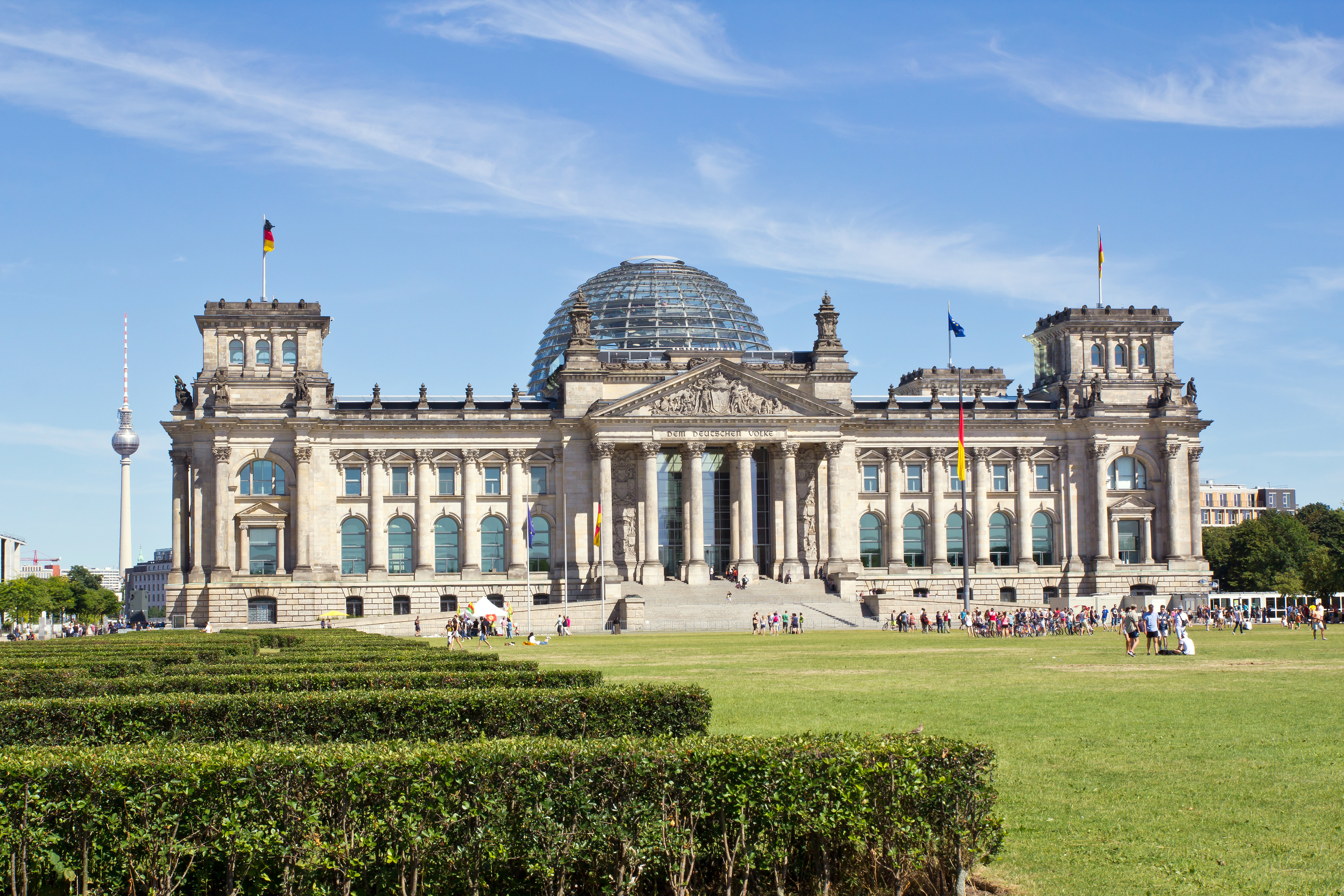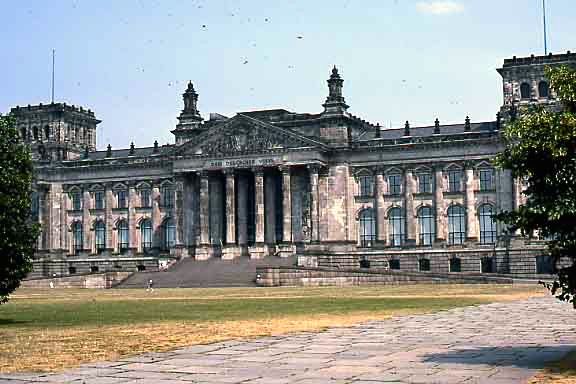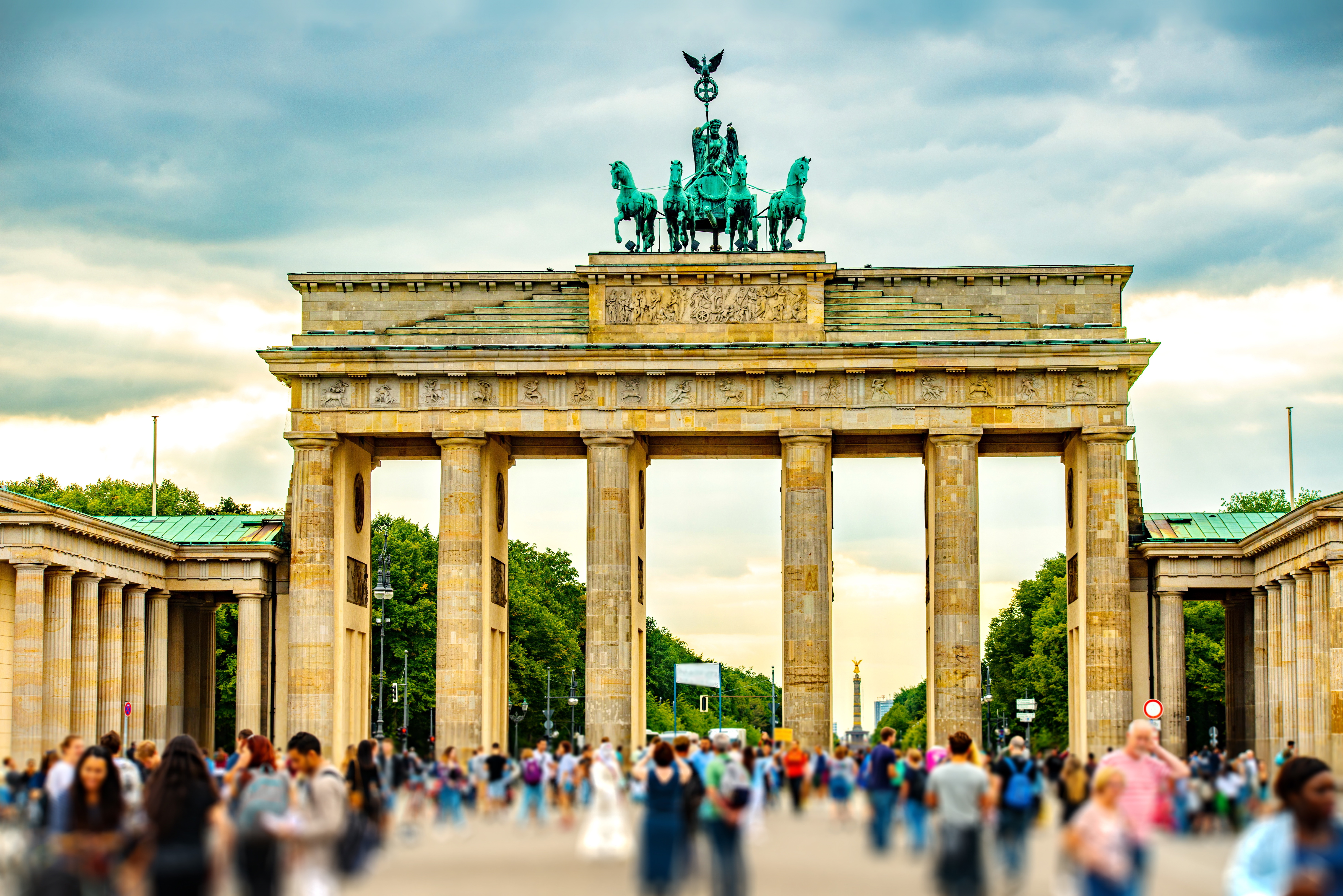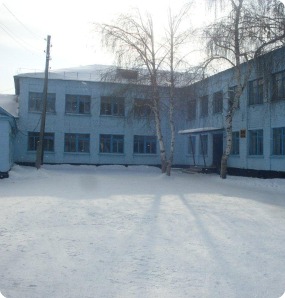By Karsten Horn
As the culminating struggle of World War II, the battle for Berlin has spawned libraries of books, several movies and numerous scholarly documentaries. This decisive, bitterly-fought conflict brought victory to the Allied Forces over Nazi Germany and shaped the geopolitical and economic face of post-war Europe.
Seventy-five years after the war’s end, the physical consequences—very obvious in the Eastern part of the city until 1990—of the bloody street-by-street fight have largely vanished. Still, many memorials, bunkers, fortifications, and museums remain today. Here are a dozen: Berlin Reichstag
Berlin Reichstag
• Begin with the Reichstag, the seat of Parliament in Imperial Germany, the  Berlin Reichstag July 1983Weimar Republic and, since 1998, in the Federal Republic. Visiting the Reichstag is free but advance online registration is required. An elevator takes visitors to the top of the building where they can walk inside the glass dome, with its spectacular view of the city center. Many tableaux provide information covering the history of the building and German politics in general.
Berlin Reichstag July 1983Weimar Republic and, since 1998, in the Federal Republic. Visiting the Reichstag is free but advance online registration is required. An elevator takes visitors to the top of the building where they can walk inside the glass dome, with its spectacular view of the city center. Many tableaux provide information covering the history of the building and German politics in general.
• A small memorial to the troops of the Soviet Union is only a short stroll from the Reichstag, on Strasse des 17 Juni. It features a statue of a soldier on a large column placed in front of a semi-arc with inscriptions and flanked by two T34 tanks. The memorial is very close to Brandenburg Gate and worth a visit.  Brandenburg Gate Today
Brandenburg Gate Today
• From Brandenburg Gate, walk along Wilhelmstrasse, to the site of Hitler’s
Reichskanzlei (Reich Chancellery), which today is an apartment block and a Chinese restaurant.
• Hermann Goering’s Reichsluftfahrtministerium (Imperial Ministry of Aviation) is only a few hundred yards farther along. The building has been described as  Brandenburg Gate July 1983being “in the typical style of National Socialist intimidation architecture.” The vast structure served the growing bureaucracy of the Luftwaffe and Germany’s civil aviation authority, offering space to 4,000 office workers. After the war, the building, which survived with very little damage, was used by the Soviet military administration until 1948, and from 1947-49 by the German Economic Commission, which became the top administrative body in the Soviet Occupation Zone.
Brandenburg Gate July 1983being “in the typical style of National Socialist intimidation architecture.” The vast structure served the growing bureaucracy of the Luftwaffe and Germany’s civil aviation authority, offering space to 4,000 office workers. After the war, the building, which survived with very little damage, was used by the Soviet military administration until 1948, and from 1947-49 by the German Economic Commission, which became the top administrative body in the Soviet Occupation Zone.
• Tempelhof Airport, reached by a brisk walk of about two miles straight along Wilhelmstrasse and Mehringdamm (or take Subway U 6 to “Platz der Luftbrücke” station), has been described by architect Sir Norman Foster as “the mother of all airports.” Built in the monumental style that characterizes many buildings of that era between the World Wars, it was once among the 20 largest buildings on earth. Its size can now be fully experienced by visitors as the airport has been closed for air traffic since 2008 and the airfield is now a public park.
During the war, the building, which has an underground railway running its three-quarters of a mile length, was an aircraft factory. It was used as a military airfield by the US Air Force from 1945 until 1994, and is best remembered for its role in the famous airlift to supply Berliners with the necessities of life during the Soviet Union’s blockade of the city.
• One of the least-known of Berlin’s WWII sites, the German-Russian Museum in Berlin-Karlshorst, has an enormous amount of well-presented material. This is where the unconditional surrender of the Wehrmacht was signed in May, 1945. Formerly known as the “Museum of Victory over Nazi Germany in the Great Fatherlands War,” this rather unassuming villa on the outskirts of Berlin is within a complex that housed the General Command of Soviet forces in East Germany. There is the usual display of armor such as a T34 tank and Katyusha rocket launcher in the garden. The hall where the surrender was signed is preserved intact. The museum is eight miles from the city center and not well connected by public transport (train S3 from Friedrichstrasse to Karlshorst station, then bus 396 and a short walk).
• Another major collection of documents and historic materials is at the Museum of Allied Forces in Zehlendorf. The focus here is on the war’s long aftermath.
There is a British “Hastings” four-engine propeller airplane, a railroad car from a French military train, and the original guardhouse of Checkpoint Charlie on Friedrichstrasse (the one placed there now is a replica). The museum is housed in the former U.S. forces cinema “The Outpost,” and has memorabilia from the time of the Allied (or, since the spring of 1948, not-so-allied) Forces rule of Berlin. It can be reached by subway (line U3 to station Oskar-Helene-Heim, then a few blocks north on foot), and is a nice stopover from the city center on the way to the next site.
• Cecilienhof Palace in Potsdam is the site of the Potsdam Conference. This charming mock-Tudor palace, completed in 1917, is where Truman, Churchill and Stalin met to decide how to proceed after the victory in Europe, known as the Potsdam Agreement. The meeting is commemorated in the palace courtyard by a big red star of flowers.
• Back in the city, a visit to the remains of one of the large anti-aircraft defense (flak) bunkers is of interest. It is located at Humboldthain, quite close to the city center. The reinforced concrete tower had 12-foot thick foundations and inner and outer walls offering another 11.5 feet of protection. Most of the tower was demolished after the war, but the north face was too close to the railway, and is a preferred site for climbers now. The bunker can be toured between April and October. The platforms at the top of the tower offer beautiful views of the city center.
• The battle of Berlin took many lives, and thus there are many war cemeteries in and around the city. Probably the most impressive is the huge (40 acres) Soviet War Memorial in Treptower Park, built in stalinistic monumental architectural style. The central area is lined on both sides by 16 stone sarcophagi, made from travertine marble taken from the destroyed Reichskanzlei, with relief carvings of military scenes and quotes from Stalin. The impressive focal point is the 39-foot high statue of a Soviet soldier with a sword standing over a broken swastika and holding a German child. This memorial is interesting, beyond its historic significance as a prime example of “Soviet Realism” art. It can be reached by S-Bahn (station Treptower Park) and a one-mile walk to the park.
• The last two sites are outside Berlin. First is Sachsenhausen Concentration Camp, near Oranienburg. Built in 1936, it acquired a special role in the Nazi system as the administrative headquarters for all German concentration camps. More than 200,000 people were imprisoned here between 1936 and 1945 and tens of thousands died of starvation, disease, forced labor, and mistreatment. Many more died during the death marches following the camp’s evacuation at the end of April 1945. It is a sad irony of history that following the defeat of Nazi Germany it continued operation as Soviet Special Camp No. 7 until it was closed in 1950.
Sachsenhausen can be reached by S-Bahn (station Oranienburg), with a short walk from the station.
• Seelow Heights Memorial is near the Polish border, about 45 miles from Berlin. This humble ridge of no more than 50 meters in height appears innocent enough today, but it posed a serious impediment to the Soviet onslaught in the Battle of Berlin, giving the German forces free shooting range over about 10 miles of flat land. The small museum commemorates the battle in which nearly one-million Soviet and Polish troops opposed about 110,000 German forces. Alas, the website is only in German, but there is a good article on the battle on Wikipedia.
(Ed. Note: Karsten Horn is a lifelong Berliner, a World War II history buff, a retired scientist from the famed Max Planck Institute, and, best of all, a longtime friend to Gemut.com.)
Rescue in the Urals
 |
| Orphanage in Orenburg, Russia |
Thirteen years ago I wrote a piece for our subscriptions travel newsletter, Gemütlichkeit, about an adoption trip to Russia. It was a fascinating, heart-warming story but since it didn't really fit our newsletter content, it never saw the light of day. Today, December 21, 2012, for complicated, political reasons, Russian president Vladimir Putin is in the process of pushing through a law that would prohibit Americans from adopting Russian babies. Given that context, perhaps you'll be interested in this quasi travel story.
Summer, 1999—A few weeks ago, Nancy Bestor, wife of son Bob, and mother of our two terrific granddaughters, agreed to accompany her good friend Sally (not her real name) on a trip to Russia. A single woman bent on adopting a Russian baby, Sally needed help and moral support. What with Russian politics and bureaucracy, the adoption was on and off at least half a dozen times. In late May it seemed definitely off. Vladimir Putin, the new Russian President, was scrapping the program. Sally, who had known the name of her baby for months and had pictures and videotapes of her, was running on emotional empty and seemed ready to look elsewhere for a baby.
Then came an early morning phone call that changed everything. A Russian court date had been scheduled and Sally and Nancy needed to be in Moscow within 72 hours.
This has nothing to do with travel.
Last week I joined my former classmates from the 1962 University of Idaho Naval Reserve Officer Training Program for a brief reunion. Of the 22 who graduated from the program and were commissioned, 16 attended the reunion. One classmate who joined us became a Marine and in Vietnam was awarded the Silver Star, the Bronze Star with “V,” and a Purple Heart with Gold Star. Sad to say, two of our 22 have died.
The purpose of the gathering was to celebrate the 50 years since our graduation and commissioning, but also to honor our former Naval Science instructor and mentor, Navy Captain Donald S. Campbell, an extraordinary leader and one hell of a human being. We, his former students, have created a small scholarship that each year is awarded to the University of Idaho NROTC student who best exemplifies Capt. Campbell's leadership qualities. This year, with Don's wife, Phyllis Campbell, and his children Brad, Casey and Kim, we returned to the University for the presentation of this year's award.
